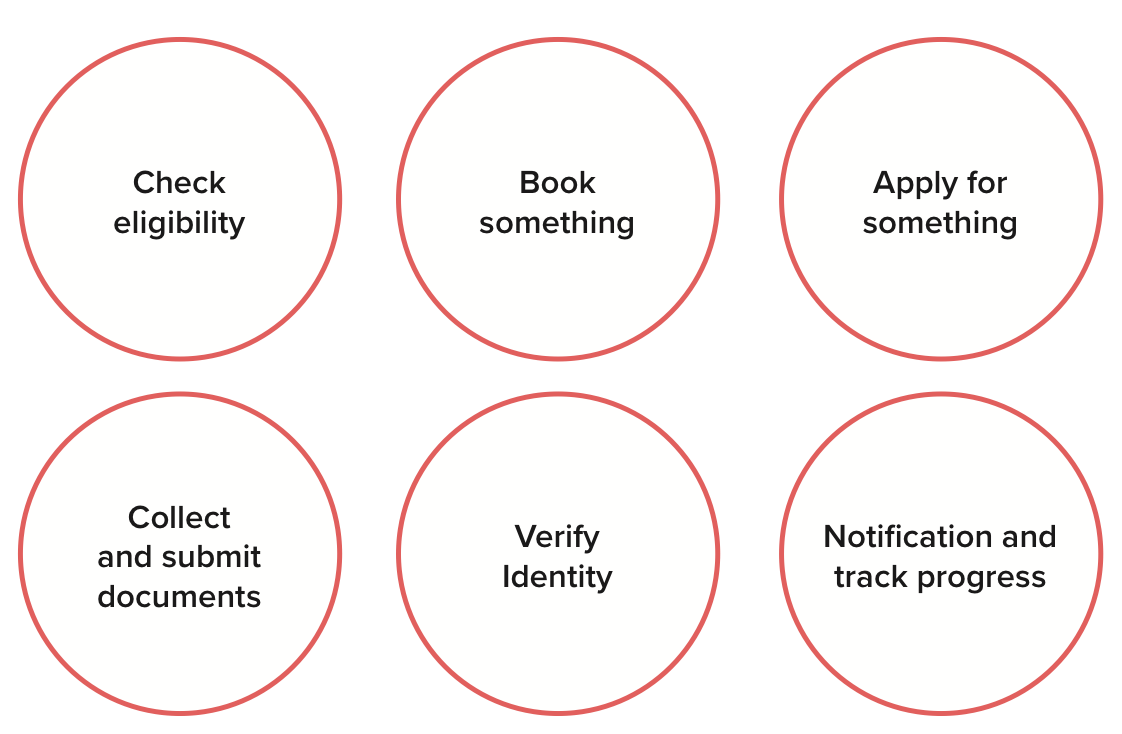Are common service patterns the future for the Housing Sector?
Digital transformation is about continuous change – ensuring your business moves forward as your customers and suppliers adapts to the technology innovations going on around them. At Amilah we are working with organisations across the Housing Sector to understand how they are adapting to this change and how that applies to their operating model. Where do they think they need to be in five years time? Where do their residents and suppliers want them to be in five years time? Reconciling these two positions is the starting point for any digital transformation. Next is understanding the fundamental processes of your business that provide the backbone for delivering quality to your customers – these processes don’t change – its only the digital inputs and outputs that will adapt over time. At Amilah we have been working with organisations across the Housing Sector to identify and capture these common service patterns for the Housing Sector to ensure the highest quality is delivered whilst minimising associated cost to serve.
Amilah already has proven experience in delivering outcomes across Local & Central Government adopting such an approach, utilising the latest thinking from the design teams at the Government Digital Service (GDS). They describe service patterns as the “practice for providing services that meet user needs [meaning] the design of the pages, user journeys and government components needed to build the service are all specified”.

Here’s our latest thinking.
Patterns should be about how services work
The biggest challenge we see in the housing sector is with how it operates services.
We think that for a service pattern to be useful it has to be a way of documenting or sharing a common user experience or user journey, and, as importantly, a supporting business process.
Although many organisations now have adequate digital channels (mostly forms on websites), these services haven’t transformed back office processes or the way that policy is handled. Despite some well implemented user journeys and interface design, most services still take considerable time and effort to operate. They’re dependent on manual interventions, handovers and many time consuming interactions across different channels including face-to-face and over the phone.
We think that a pattern at a service level such as ‘paying your rent’, or ‘reporting a repair’, must also help shape the design of the organisation operating the service. This means capturing the best practices or potential uses of technology and automation applied to how a service works across all interactions (not just on screen).
When this doesn’t happen patterns fail to go beyond good practice for content and interaction design — it means that they typically only document screen-based or ‘online’ activities.
The real opportunity here is apply pattern thinking to the internal mechanics of how organisations work to enable organisations to become more digital. At Amilah, our proven design frameworks consider both the customer journey linking through to the underlying business processes, operating model and technology. Only by understanding your business in this way can you be sure that the digital investments you make for the future will also actually shape your business for the future.
Moving beyond better forms
The answer is never a better form unless you’re asking the wrong questions.
When we’re designing forms and digital transactions usability and accessibility matter to users. But this can often hide the fact that many interactions with organisations are unnecessary and only exist because we don’t have ways to share data or help people connect together the different services that they need (often with a unique set of circumstances only applicable to their individual situation).
We believe that helping the housing sector solve operational problems is the best way to work towards significantly improving these services for their residents. This doesn’t just mean simpler, clearer, faster transactions, but should eventually mean that some services become completely invisible to users.
Working together
The simplicity of a documented service pattern is attractive but doesn’t address the complexity introduced by what really happens in the lives of the individuals having to interact with their housing companies.
At Amilah we completely agree that co-design and closer working between different housing associations and local authorities is the way forward. As the latest blog post by the GOV.UK Verify local design team sets out co-designing and researching the same types of services, potentially even building them at the same time makes it possible to achieve far more together than we can have individually.
Facilitation across similar types of services is a great opportunity for the housing sector and co-design is a proven approach that many agencies including Amilah have used to make this work. Co-design should also mean work happening across organisations and different levels of local government (when appropriate) and is the focus of projects we’re supporting into the future.
We believe that not losing sight of context across all services is just as important. Testing and iterating solutions based on real service delivery in different places. For example, although they’ll have much in common, the challenges for housing in the London borough of Hackney and for rural district councils is very different when exposed to the realities of user needs in local communities.
It’s all just good service design
Instead of focusing on service patterns we think it might be better to start by focusing on patterns for good service design in the housing sector.
As a summary, this is the approach we’re taking to make this happen:
- Focusing on fixing services, not websites.
This means prioritising service outcomes, and first and foremost focusing on people. It’s designing how organisations operate to make sure services work for everyone — providing flexibility and choice when and where it’s needed (not just screen based transactions). We believe that it should be possible to share solutions built on digital working practices that become alternative patterns to better web forms. - Working together, and beyond boundaries
This means working across organisations at all levels of the housing sector and in the 3rd sector — encouraging people to work beyond their own organisational boundaries. We believe that more housing services in the future will be the result of co-design (and research) and also shared operational platforms built around emerging digital business models. - Documenting and sharing.
This means helping local government find effective ways to share work on services, with the potential for reuse. We think that the GDS service pattern examples are useful and we intend to reuse or find ways to contribute patterns for services that we’ve already created.
Come and speak to Amilah to understand how we can help you. 01279 888215



